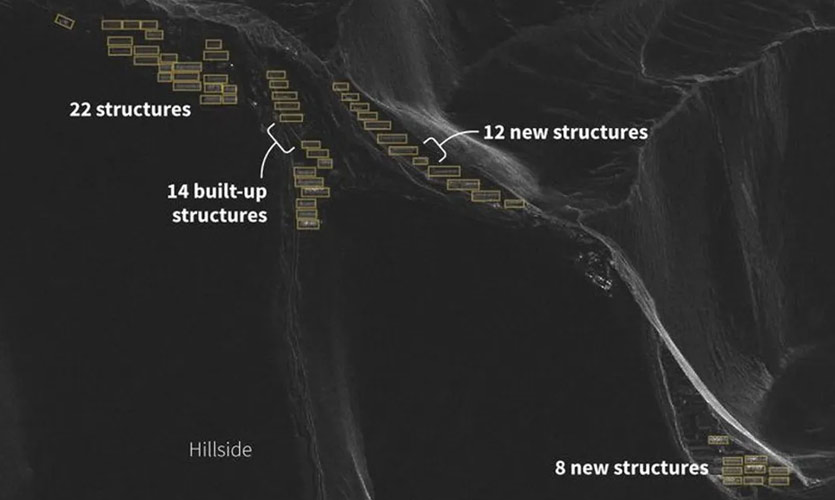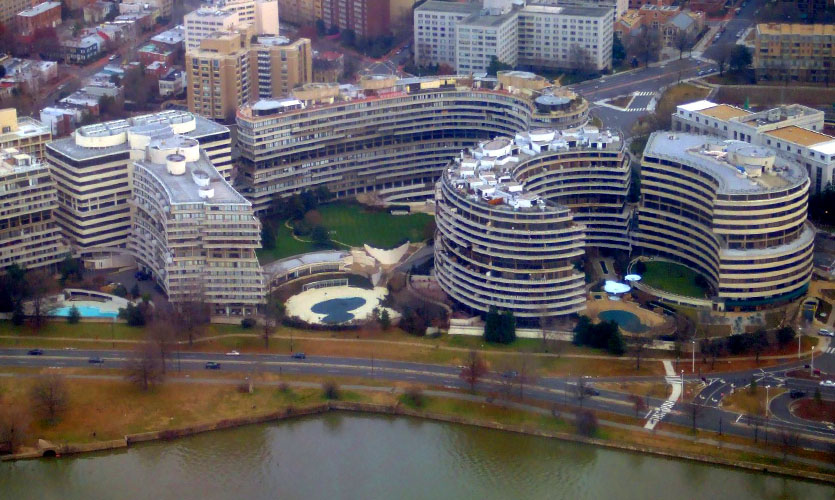According to Reuters’ satellite image analysis, China has intensified settlement construction along its disputed border with Bhutan, with more than 200 structures, including two-story buildings, under construction in six areas. The photographs and analysis provided to Reuters by HawkEye 360, a US data analytics business that utilises satellites to gather intelligence on ground-level activity, and validated by two additional specialists, give a thorough insight into China’s recent building along its border with Bhutan. According to Chris Biggers, mission applications director at HawkEye 360, based on material provided by satellite imagery firms Capella Space and Planet Labs, the construction project has been underway in certain areas along Bhutan’s western edge since early 2020, with China originally constructing tracks and having to clear out areas.
Biggers said that the smaller structures were created first, probably to hold equipment and supplies, before foundations were laid and buildings were built. “2021 was the year of acceleration for me,” he added. Multiple other specialists who researched the new territories’ locations and recent Capella Space satellite images concluded that all six settlements appear to be in the disputed territory between China and Bhutan, including a contested tract of roughly 110 square kilometres with little resources or native population. “It is Bhutan’s policy not to discuss border matters in public,” said Bhutan’s foreign ministry in response to Reuters’ inquiry. The ministry refused to elaborate.
According to analysts and one Indian defence source, the building indicates that China is determined to resolve its boundary claims by giving its goals physical shape. According to China’s foreign ministry, the building is “entirely for the improvement of the working and living conditions of the local people”. “It is within China’s sovereignty to carry out normal construction activities on its own territory,” the ministry said. It declined to comment further.
The settlements reportedly have strategic relevance for Beijing. The new building is 9 to 27 kilometres from the Doklam region, which is located at the intersection of the borders of India, Bhutan and China. In 2017, Indian and Chinese forces were trapped in a stalemate for more than two months in this region. According to experts, the settlements would allow China to better manage and monitor far-flung locations, as well as potentially utilise them to create security-focused outposts. A request for a response from India’s foreign ministry was not returned. In the past four decades, Bhutan, a country of fewer than 800,000 people, has been negotiating with Beijing over their 477-kilometre border dispute. Bhutan is concerned not just about its territorial integrity, but also about the possible security consequences for India, the Himalayan kingdom’s key ally and economic partner.
Bhutan’s foreign ministry stated that at the most recent round of border discussions in April 2021, Bhutan and China agreed to expedite the process of settling their issues. “China’s village building across the claimed Bhutan border appears to be designed to force Bhutan to yield to Chinese demands in their border negotiations, now in their 24th round after 37 years,” said Robert Barnett, a professorial research associate at SOAS University of London and an expert on Tibet who has closely studied the China-Bhutan border.
As described by Taylor Fravel, director of MIT’s Security Studies Program, the settlements appear to be part of a Chinese plan to build 600 villages in border areas in the Tibetan Autonomous Region (TAR), which lies on the Chinese side of the border dispute. Fravel suggests that China may be consolidating authority and strengthening infrastructure in border areas based on research. After the Dalai Lama fled Tibet in the wake of a failed rebellion against Chinese power, the TAR was established in 1965. Some of the settlements along the border have been built on land that has never been developed before. According to Barnett, the Chinese government provides citizens with subsidies to move there.
Read more: Pakistan’s Economic Condition Is Better Than India: Imran Khan
China might be able to better access the adjacent “Chicken’s Neck” area, a swath of terrain connecting India to its northeastern region if it controlled the isolated Doklam plateau. There is an unresolved boundary of 3,500 kilometres between India and China. Both nations have troops stationed in the Ladakh region in a separate border dispute. Sources within the Indian defence establishment indicate that India has closely followed Chinese military construction around its borders, but declined to provide their names because of the sensitivity of the issue. As per the satellite images produced by Reuters, neither India nor Bhutan has replied to China’s development efforts on the ground.










